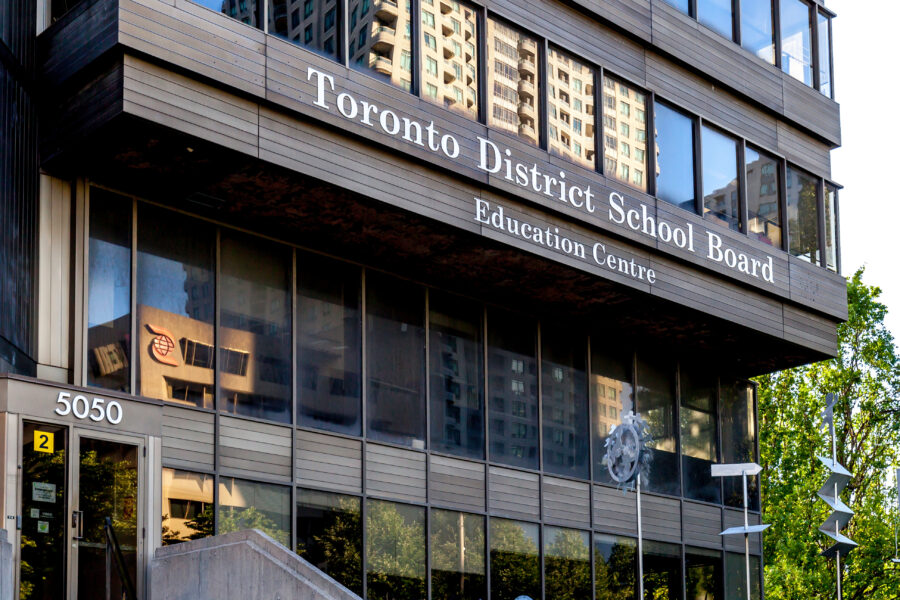Violence Increasingly Common in Schools Across the Greater Toronto Area

With violence becoming common in schools across the GTA, some parents and students call for a concrete solution
Schools should be one of the safest spaces in our communities, where student learning and development is the focus. With violence increasingly common in schools across the Greater Toronto Area, for many students and staff, school no longer feels like the safe place it should be.
According to a CTV news report, some students at the TDSB (Toronto District School Board) are scared to go to school due to the risk of violent incidents. A sentiment shared by Georgina Hkabiru, a Grade-12 student at David and Mary Thompson Collegiate in Toronto, “I’m kind of scared to come to school knowing that anything can happen at any moment.” (Source: CTV news https://toronto.ctvnews.ca/video?clipId=2581710)
Naturally, many parents feel not enough is being done by the TDSB to protect their children from harm while attending school, especially at schools with a history of violent incidents.
Parents and students want action and are looking at solutions that would have recently been considered unthinkable in Canada. “As long as there is a police officer inside the schools, I think that will give everybody inside; the teachers, the management, the kids themselves; they will feel there is someone here to protect them.”, says parent Basel Alriyab. (Source: CTV news https://toronto.ctvnews.ca/video?clipId=2581710)
While Police in schools may be an effective means of deterring some violent incidents, police presence alone is not enough. Recent mass school shootings in the United States, where police presence in schools is commonplace, neither prevented nor reduced the impact on children’s safety.
School safety requires a comprehensive approach where an effective emergency response plan tightly couples human response with safety technologies.
According to PASS (Partner Alliance for School Safety), an emerging US authority on school safety, forming a school safety committee is one of the most fundamental steps to proper planning. That is one important measure the TDSB has already put in place. Safety counsels or committees with stakeholders from various roles within the school and the larger community are better equipped to make policy and procedure decisions based on their specific circumstances, personnel, budget, and technology infrastructure.
A critical decision facing school safety committees is selecting the school’s communication system, which is essential in detecting, alerting, informing, and instructing staff and students within moments of a crisis event. School communication systems are the first line of defense during an emergency considering the average police response time is upward of 15 minutes and 50% of active shooter events are over in just 5 minutes, well before help arrives. (source: https://www.alicetraining.com/wp-content/uploads/2018/12/ALICE-Fact-Sheet-with-references.pdf).
Performance and functionality vary depending on the solution. Effective mass notification systems for schools have evolved beyond basic paging and intercom and should have the following key performance capabilities.
- Priority-based calls and alerts
- Automated and prerecorded messages
- Audio and visual communication
- Classroom Lockdown Acknowledgement
- Redundant one-touch lockdown and alert initiation
- Real-time visual feedback, ideally represented on the school floor plan
- Endpoint monitoring (speakers)
- Integration with third-party systems (e.g., video and access control)
With hundreds of schools in Ontario relying on CareHawk communication platforms like the traditional CH1000 and the IP (Internet Protocol) based CH2000IP, this complex decision has become simple. CareHawk products are designed specifically for K-12 schools, integrate with existing wiring and speaker infrastructure, and undergo rigorous testing and continuous development. To complement benchmark performance, CareHawk products are supported by an industry-leading warranty and a network of certified installers and customer support.
Furthermore, practicing lockdowns, severe weather events, and other safety drills, using the Life Safety Communications Technology at the center, is needed to cultivate a sense of security for students and staff. It is now essential for effective emergency response.
A recent example of this proactive approach to school safety was demonstrated by The Peel Regional Police, where a large-scale emergency response drill was performed in coordination with the Dufferin-Peel Catholic District School Board (DPCDSB). The CareHawk platform installed at Saint Thomas Aquinas Catholic School was integral to the success of the emergency lockdown and adverse scenario day-long exercises.
“It was successful for us because we saw everything working the way it should, the way it was designed. Well, the minute the [lockdown] button got pressed, within not even 10 seconds, I had an e-mail on my phone. Our Chief of Security, sitting beside me, had the same e-mail; that Saint Thomas Aquinas went into a lockdown.”, said the Manager of Network Infrastructure, Cyber Security & Telecommunications for DPCDSB.
For some schools, police presence may be part of a comprehensive strategy but is impractical for many school districts due to limited resources and funding. Fundamental safety measures centered around effective school communication systems are the foundation for a successful safety strategy. When staff and students are familiar with the method of communication, procedures, and practice drills, schools empower staff and students and prepare them for whatever happens, so they can focus day to day on what’s most important: learning.